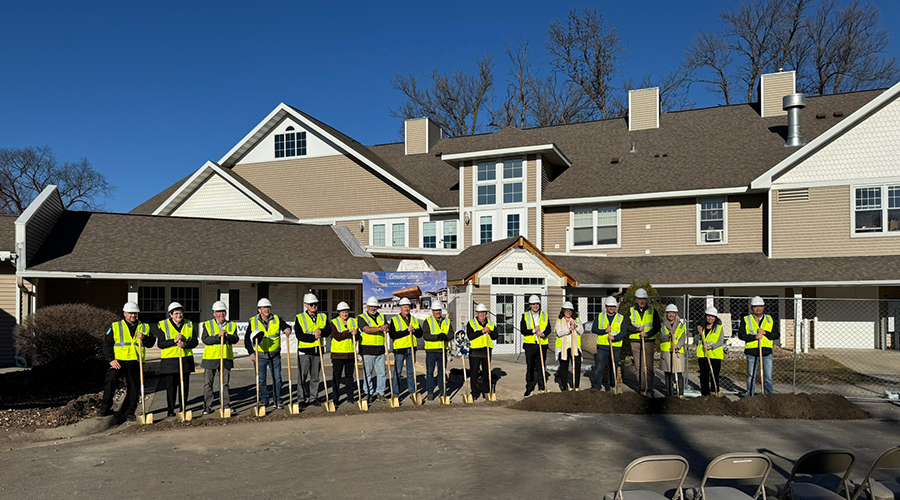New buildings can have a detrimental effect on communities, driving out longtime members due to price inflation and other factors. However, when a healthcare facility is added to a neighborhood, there is a larger sense of hope as these types of buildings are meant to bolster communities as they bring in more jobs and healing opportunities.
Designers are not unaware of the challenges that a new building can bring. To help smooth the transition in neighborhoods, more designers are relying on community engagement to help plan out their designs of new healthcare facilities. Healthcare Facilities Today recently spoke with Roderic Walton, principal at Moody Nolan on how designers can seek community input during the design process.
HFT: How can designers balance community input with regulatory requirements and design constraints?
Roderic Walton: The key lies in aligning community needs with established regulations and identifying areas of convergence and priority. Notably, many regulations are evolving to promote healthier communities. Elements like energy efficiency and green design, once discretionary, are increasingly becoming mandatory. The American Institute of Architects' Framework for Design Excellence provides a valuable guide for advocating for enhanced design outcomes. It positions architects as trusted advisors, bridging the gap between agencies, clients and communities. By engaging early with state and local agencies, and fostering a collaborative partnership, designers can develop mutually beneficial solutions that address community needs, client expectations and regulatory requirements.
HFT: How can a designer handle conflicting opinions or feedback from different community groups?
Walton: Architects often encounter a valuable opportunity when soliciting priorities from stakeholders. Community definitions of health typically extend far beyond just medical care, encompassing a holistic view often referred to as "social determinants." This includes factors like economic stability, social support systems, access to quality education, and a safe, well-maintained built environment. Moreover, the legacy of institutional racism can significantly impact health outcomes and drive concerns regarding trust. Recognizing this broader perspective, architects can act as partners by:
- Facilitating Discussions: Guide community conversations to identify priorities within the project's scope while acknowledging the importance of social determinants.
- Creating an Actionable Plan: Develop a list of action items, including those beyond the immediate project's reach. This can involve collaborating with the client to engage partner agencies to address broader community needs.
By acknowledging the community's holistic view of health and collaborating on a multi-pronged approach, architects can design facilities that directly address project goals while supporting the long-term well-being of the community.
Related: Human-Centered Design Can Redefine Physical Spaces
HFT: What are some common challenges designers may face during community engagement and how can they overcome them?
Walton: Building trust and open communication with staff, patients, and the public is crucial throughout the design process. Apprehension can arise, making stakeholders hesitant to share their needs. To address this, we can foster genuine relationships by creating accessible opportunities for connection. Here's how design can play a role:
- Familiar Spaces: Designate in-person spaces that feel welcoming and familiar for community meetings and feedback sessions.
- Enhanced Accessibility: Offer varying venues to ensure that conversations are accessible. Rather than requiring the community to come to us, we must often go to them. This means “pushing in” at places of worship, schools, senior centers, etc.
By prioritizing approachability and creating opportunities for open dialogue we can empower stakeholders to feel comfortable sharing their wants and needs. This collaborative approach leads to designs that are truly responsive to the community.
HFT: How can designers ensure ongoing community engagement throughout the construction and operational phases of the project?
Walton: A successful community engagement strategy extends beyond the design phases, extending throughout construction. Stakeholders appreciate and value ongoing communication and involvement while the project is being built. Here are some creative ways to maintain a connection:
- Regular Updates: Distribute informative pamphlets or newsletters, published on a predictable schedule, showcasing construction photos and progress updates.
- Community Events: Organize casual, in-person events like lemonade stands hosted by local youth in summer months, or lunches for construction teams catered by local, family-owned businesses. These provide opportunities for construction teams to connect with residents on a personal level.
- Project Tours: As construction progresses, offer guided tours with community leaders to showcase advancements and generate positive buzz.
HFT: What trends do you see in community engagement practices for healthcare facility design?
Walton: The future of healthcare design prioritizes both sustainability and patient equity. In communities with abandoned buildings, adaptive reuse offers a sustainable, environmentally responsible solution. Local health organizations can repurpose existing structures in prime locations, reducing the carbon footprint of the project while redirecting construction savings towards expanding vital healthcare services. This approach aligns perfectly with the growing recognition of patient equity as a fundamental patient right, not a discretionary add-on. By leveraging existing infrastructure, healthcare providers can afford to invest more in services that directly address the needs of the community. These can include outreach and “wrap around” services that respond to holistic health and wellbeing.
Mackenna Moralez is the associate editor of the facilities market.

 Healthcare Is the New Retail
Healthcare Is the New Retail Bridgeway Behavioral Health Services Launches Campaign to Renovate Health Center
Bridgeway Behavioral Health Services Launches Campaign to Renovate Health Center Ground Broken for New North Dakota State Hospital
Ground Broken for New North Dakota State Hospital AI Usage for Healthcare Facilities
AI Usage for Healthcare Facilities Ground Broken on Pelican Valley Senior Living Modernization Project
Ground Broken on Pelican Valley Senior Living Modernization Project